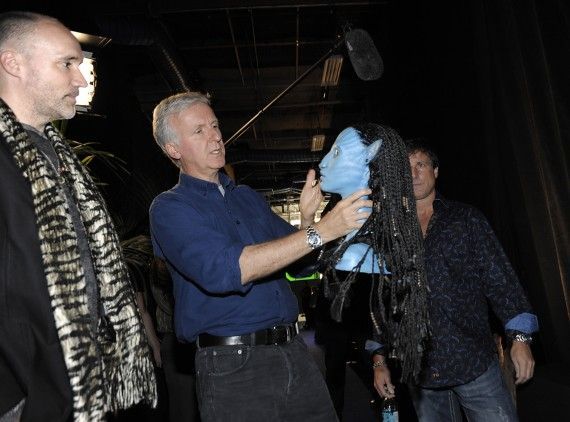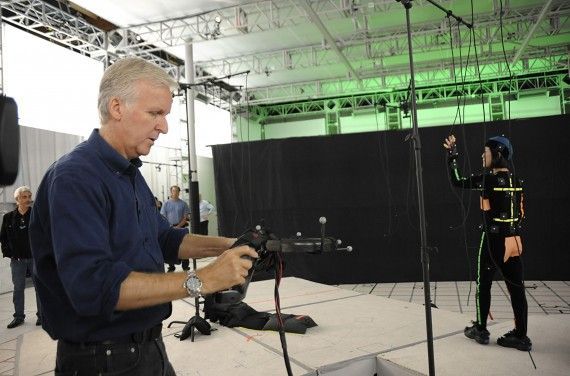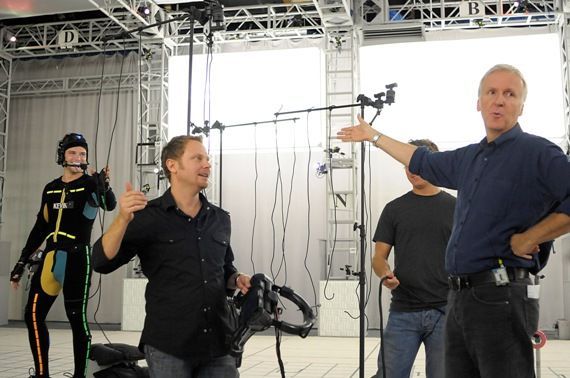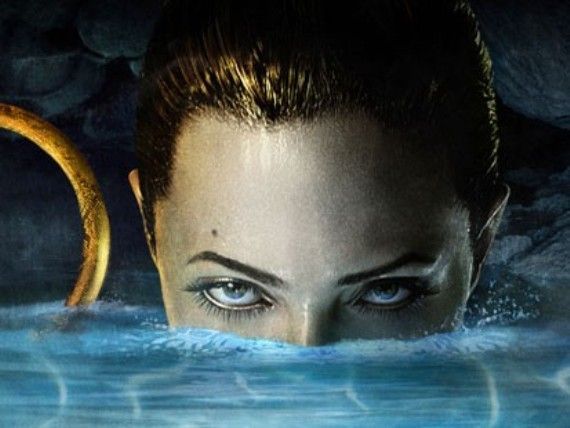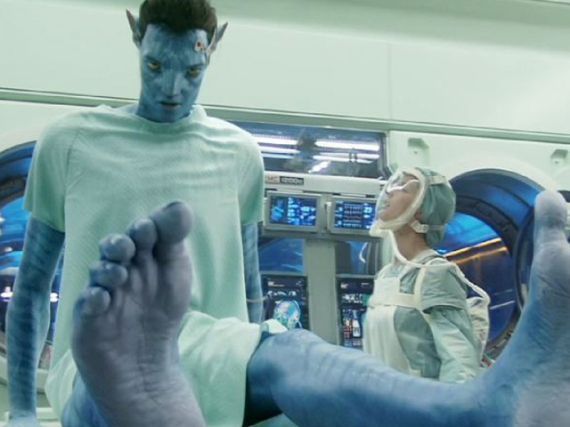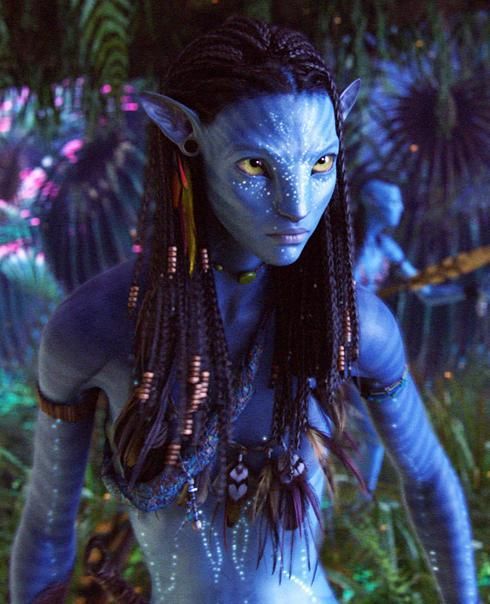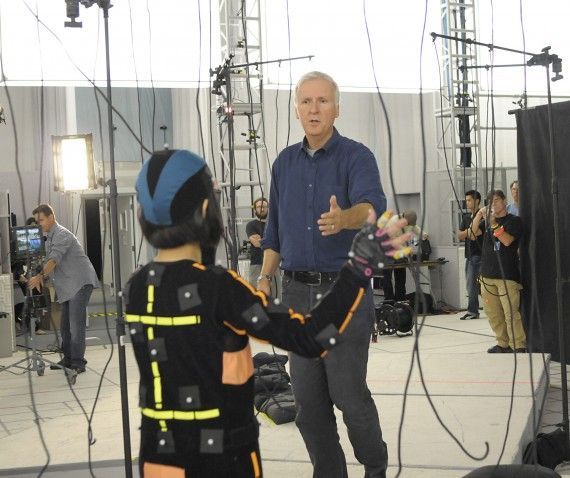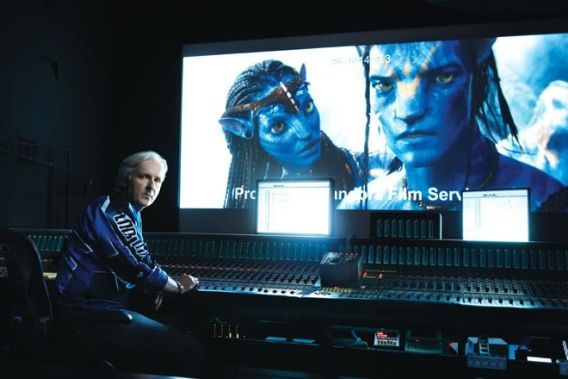Last month, in an effort to both promote, and illustrate the purpose of, the release of the Avatar Collector's Edition Blu-ray/DVD, James Cameron held an event called the Avatar Global Media Day - where reporters from across the globe were invited to an in-person tour of all the stages involved in the creation of Avatar.
I was lucky enough to attend the event, which was akin to taking an in-person tour of "Capturing Avatar" - the feature-length documentary about the making of the film, which will be available with the Collector's Edition Blu-ray.
Throughout the day we were taken to a series of ten stations which represented the various departments, steps, creative and technological processes involved in producing Avatar.
The stations were manned by the actual people responsible for creating the film - men and women who often likened the production to various treacherous scenarios such as “building an airplane in flight,” “stitching the parachute on the way down from the plane,” and the less deadly “trying to paint while paintbrushes are being invented.”
The stations included a look at the creation of the creatures and vehicles (including the AMP suit, and a glimpse of an "unobtainium" sample), a 3D camera demonstration, a look at the sound design (including a chat with composer James Horner), and a tutorial in virtual camera and simulcam technology.
-
- James Cameron Demonstrates The Virtual Camera
I had the opportunity to operate the virtual camera, and experience the magic myself. Operating the camera was absolutely amazing. Imagine a 3D video game with almost infinite possibilities for movement and scope, crane shots, extreme close-ups, zoom-ins from a hundred (virtual) feet away, with the wildly imagined characters live and in front of you.
Film fanatics will enjoy this video with highlights from the day:
[media id=270 width=570 height=340]
The concept for the event arose because James Cameron was dreading another press junket, where there is no real time to get down to “the cool stuff.” He felt that it was impossible to convey the “the purpose of the special edition disk set in the small interview time that each reporter would be allotted." The purpose of the junket, for Cameron, was “to celebrate the team, and the effort behind the film, and help the fans and the film community at large to understand how the film was made, with all of these new pioneered techniques.”
WHAT JAMES CAMERON WANTS YOU TO KNOW:
Several messages came through in the course of the day, some of which we may be familiar with, some of which may be a surprise:
One: Performance was highly valued in this film, and the creators want us to know just how the technology works to enhance and support those performances, so that we do not relegate the actor to a (falsely) limited role in the production. This was stressed in every station, by every department. For myself, I believe that Zoe Saldana absolutely deserved at least a best supporting actress nomination for her role in this film, but that is a matter for another post.
Two: The simulcam is the piece of technology that the team feels has the greatest implications for the film industry going forward. Many people feel that it was the 3D that was revolutionary in Avatar, for Cameron, however, "that was already a mature technology" when they began production. He goes on to say that:
This is one of the hardest things to explain about this movie. One of the leading questions is: 'So you created your own camera for this movie?' Well, no, actually we created three cameras; which are all completely separate. One is the virtual camera, which is basically just a TV monitor with handles that allows us to see into a world that you can't see in any other way. It's all around you, you can point it up, you can point it around, you can look around at the environment that you are standing in, but can't see. You are actually in this immaterial world, and it allows you to see that. It's a pretty amazing process.
A completely separate camera that took seven years, and ten million dollars to develop, prior to making Avatar, was the 3D camera.
The cameras have nothing to do with each other. We could have chosen live-action 3D like Step Up 3D, or any other live-action 3D.
Or we could have chosen to do completely virtual performance capture like Beowulf with the virtual camera, but we chose to merge the two technologies together to create a hybrid movie.
Now, here's where it gets squirrely.
I was working with the virtual camera and I said to the tech team: 'What if this was not a virtual camera? What if this was in fact a real camera, pointing at real actors, and we could also plug in virtual subjects simultaneously, by shooting the actor in front of the green screen, or by comping them in in real time?'
So, we took the two separate cameras and merged them together into one system; and we call that simulcam.
And the idea would be that I could simultaneously have an actor performing nearby (in the virtual world) and we could take that character and feed it into the eye piece of my camera while I am working on a live-action sequence, and shooting actors with real lights and so forth.
An example is when Jake wakes up for the first time in the lab.
We are in a lab, and I am operating a camera hand-held following a character, who is ten feet tall who's not there – but I can see him.
And he is operating on a set that is a half scale set nearby; and I had to cue the actors who were live about where he was moving, because they couldn't see him of course, but I could see him, so the validity of the camera placement and the shot design was informed as if he was right there.
So it was a pretty remarkable process; in terms of being revolutionary, we think that that is one of the things that is really going to change how visual effects are done going forward.
Three: James Cameron is a director who pays meticulous attention to the details; a trait that inspired a few grumbles from the members of the crew over sleepless nights, and the high tension deadlines they were under to meet the directors exacting standards. It is also a trait he seems well aware of, and even displays some self-deprecation about.
One of the stations included linguist Paul Frommer, who developed the Na'vi language for the film. The process of (initially) developing the structure and philosophy of the language took six months of work, and continues to this day.
Cameron joked that people felt that -- this is where he had really gone "off the deep end", that it was akin to “getting the carpet the exactly right pattern on Titanic.”
Yet the director felt he had to "invest Paul with a mandate to say to the actors; Na'vi is a real language and you must learn it as if you are learning French or Russian.”
In addition to what a fully-formed language brings to us, the audience, in terms of worldly dimension, the actors were more invested in roles that gave them something to chew on. Cameron went on to elaborate how building this language lent itself to the creation of a textured and fully realized world.
Actors love that kind of challenge. Way in the back of their mind they know its gobbledygook; but they know that it will make the film better and it also gives them something to commit to in terms of creating the character. That is a very important thing for the actor, and in the psychology of actors, to give them these challenges. Especially when they are going to a performance capture stage when they don’t even look like the character will finally look. They look like they are wearing a black Lycra leotard, so they need as much confidence and sense of ownership of the character as possible. So Paul, because of his obsession with detail, fed into that in a way that I think really lifted it all to another level.
MR. METICULOUS:
When he was making his Seminole film, Gone with the Wind, producer David O. Selznick insisted that the actresses playing the (initially) spoiled daughters of the south don pure silk petticoats. Actress Ann Rutherford (who played Scarlett's sister) told O. Selznick that “he could save a lot of money if he used flannel petticoats as I (Rutherford) did in westerns.” She wondered at the expense, and told the producer that "no one would know the difference"; to which O. Selznick replied simply,“you would.”
Now, that relentless attention to detail may seem wasteful to some, or borderline psychotic to others; but to me, when it comes to the art of filmmaking, I find it to be the mark of a craftsman with great passion. In the making of Avatar, every CJ costume, headdress and piece of jewelery was physically made at least once by Academy Award-winning costume designer Deborah Scott. Botanist Jodie Holt was hired to serve as a consultant for Sigourney Weaver's character, Grace Augustine, and eventually created Latin names and general descriptions for every single plant on Pandora--and so on.
There are strengths and weaknesses to Cameron as a filmmaker, but one thing that makes his movies stand out from the crowd is the sheer amount of passion he puts into them. Cameron puts serious intention and intensity into his work, and that translates in a visceral way to me as an audience member. I may, ultimately, be drawn to a different type of film as my absolute favorite, but I always respond to Cameron's films on an instinctual level and his relentless and passionate drive gives me a good sense of why that is.
James Cameron exhibits the same drive towards perfection that David O. Selznick did - perfection in the sense of the most fully-realized version of his vision. (Note -- before you comment, this is not a comparison of their work, this is a comparison of their work ethic).
CAMERON ON THE "RIGHT WAY" TO USE FILM TECH:
Cameron also has a relentless drive to educate. He wants the film community, and the movie going audience at large, to understand what it took to make Avatar, where the focus of the creators was, and how other filmmakers can use the technology in a way that he feels is responsible and makes sense for the story they are trying to tell. There is an inherent sense of irony in the fact that the man who so often pushes the technological envelope, also makes films about the dangers of irresponsible technology. Perhaps that is part of what drives his desire to educate and sometimes, well, reprimand.
However, while the goal of the Avatar Global Media Day was to give participants a hands-on interaction with the technology used in the creation of the film, Cameron and his team always stressed that story was, and is, primary for them. There was a constant stress on how to use the technology properly. An example of an irresponsible use of motion-capture would be to falsely inject an actor who has passed away (like, say, Marilyn Monroe) into a film using capture. An appropriate use, according the Cameron and his team, would be to age a living actor from ten to 100, in which case, Cameron feels that the capture is a support for the story, not unlike prosthetic makeup.
-
To know more about the features of Avatar Extended Collector's Edition Blu-ray, read the second part of our report by going HERE.
The Avatar Collector's Edition Blu-ray/DVD will be released on November 16th.

